Speech Analytics Tools for Call Centers: A Guide
by Kent Mao | Published On May 10, 2024

The right data is essential for improving your call center operations. Speech analytics tools can help unlock the hidden data in every call.
If you want your call center to be successful, it’s important to constantly analyze conversations and search for opportunities to improve your customer experience. Thankfully, new speech analytics tools are harnessing the power of AI to derive insights from every conversation and turn discussions into actionable data.
So what exactly is speech analytics for call centers, how does it work, and how do you ensure you’re implementing the right technology? This guide will cover all these topics and more.
What are Speech Analytics Tools for Call Centers?
Speech analytics tools enable companies to record, transcribe, and analyze conversations at scale using artificial intelligence (AI).
They work by turning unstructured audio data into a more structured form that can be analyzed and extrapolated. Speech analytics tools use a combination of different technologies including speech recognition, natural language processing, automation, and machine learning.
The most common way to use speech analytics in the call center is for post-call evaluation. This means companies use tools to analyze the trends and patterns in a call after a conversation has ended.
Leading vendors are beginning to integrate speech analysis tools with real-time monitoring, recording, and transcription services. This empowers companies to provide agents and supervisors with real-time data during a live conversation.
Uses Cases for Speech Analytics
Here are some common use cases for speech analytics tools:
- Optimize quality assurance: Speech analytics tools provide insights into agent performance, helping to identify strengths and weaknesses during and after a call. This helps companies identify issues that may harm the quality of customer interactions.
- Enhance agent training: By providing insights into agent strengths and weaknesses, speech analytics tools can help identify which employees need additional support and training, and what type of training is needed. Some solutions can even be combined with virtual agent technology, to deliver real-time coaching and guidance to employees in the form of agent assist chatbots.
- Improve customer experience: By analyzing customer sentiment and conversation trends, call center leaders can identify opportunities to improve the customer experience. Some speech analytics tools can even help analyze self-serve utilization rates and opportunities for automation.
- Maintain compliance: In industries subject to strict regulatory compliance standards, speech analytics tools can help ensure agents adhere to specific scripts, disclose necessary legal information, and follow best practices for data security.
- Elevate decision making: Speech analytics tools can help companies make smarter business decisions by mapping the customer journey and identifying friction points and opportunities. Ultimately, implementing these tools in your call center can contribute to better resource management and accelerated growth.
Speech Analytics vs. Conversation Analytics
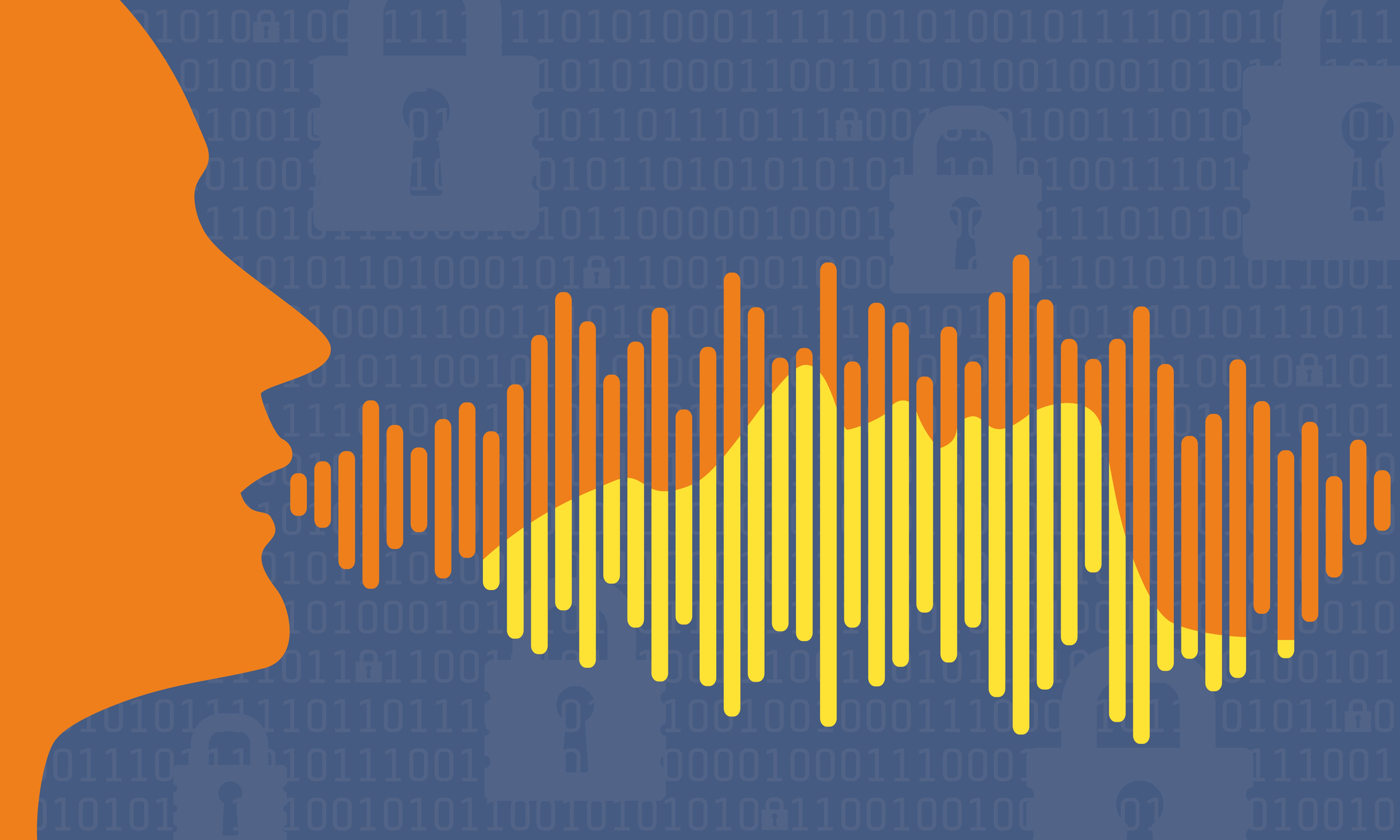 In call centers, speech analytics and conversation analytics are both crucial technologies used to extract insights from customer interactions, but they focus on slightly different aspects and use cases.
In call centers, speech analytics and conversation analytics are both crucial technologies used to extract insights from customer interactions, but they focus on slightly different aspects and use cases.
Speech analytics primarily involves the analysis of spoken words to extract useful information. It focuses on the literal content of what is being said during calls. Key aspects of speech analytics include transcription, keyword spotting and emotion detection.
Conversation analytics, on the other hand, goes a step further by not only analyzing the words but also understanding the context and extracting deeper insights from conversations. This includes intent recognition, interaction analysis and agent performance evaluation.
However, in most cases, the terms speech analytics and conversation analytics are used interchangeably and most software tools provide a full range of features.
Benefits of Speech Analytics Tools
As AI models evolve, speech analytics tools can help companies understand their customers’ journeys, adapt to changing market dynamics, and even reduce costs by optimizing resource allocation.
The right speech analytics tools can offer many benefits to your call center.
Better Understanding of the Customer Journey
Today’s customer journey is multi-faceted, often involving numerous touchpoints and conversations. Speech analytics software can help you achieve deeper insights into each stage of the customer journey. It can also help identify common pain points that your customers need to address when they reach out to your call center.
The right software can aggregate information about common topics and customer sentiment from thousands of calls, painting a clear picture of where your customers are having issues. Those insights can help guide your customer service strategy to reduce customer effort, help you allocate resources more effectively, and even give you the guidance you need to develop better onboarding programs for new hires.
Reduced Customer Churn Rates
Speech analytics software allows companies to analyze recorded and real-time interactions. In doing so, you can easily identify which interactions increase customer satisfaction and retention rates, and which lead to customer churn.
For example, if you notice that prolonged wait times or regular call transfers lead to reductions in your customer retention rates, you can implement intelligent call routing strategies to address this. Alternatively, say you discover that your customers are struggling to navigate through your IVR menu when contacting your call center. To easily fix this, you can redesign your phone tree and introduce intelligent IVR solutions.
Increased Revenue
Speech analytics tools don’t just give companies a way to identify issues that might be affecting customer satisfaction. They can also be used to identify opportunities to boost revenue and customer lifetime value. For example, by leveraging sentiment analysis, speech analytics tools can identify the perfect time to present cross-selling and upselling opportunities to customers.
The right tools can also help you identify high-value customers and leverage historical data to build a proactive outreach strategy. Speech analytics tools can help you pinpoint which customers are most likely to value your new products and services, thereby enhancing opportunities to drive revenue growth.
Better Quality Assurance and Agent Performance
Speech analytics tools can monitor agent performance in real time, providing instant insights into resolution rates, script compliance, and customer satisfaction scores. Companies can instantly detect potential performance or call quality issues that might harm the customer experience.
Additionally, they can leverage data on employee performance to identify training and development opportunities. It’s even possible to use speech analytics to help with creating agent assist tools, like virtual agents and screen pops, which can enhance employee productivity.
Less Post-Call Work
The right speech analytics tools don’t just make customer experiences more convenient and streamlined, they can also enhance the employee experience. Automated tools eliminate the need to manually log dozens of conversations, empowering agents to focus more of their time on other valuable tasks.
Tasks like updating records, logging information, and updating CRM notes can all be automated with AI-enhanced speech analytics tools.
This helps to improve employee satisfaction and engagement rates while reducing operational costs, ensuring businesses can get the most value out of their resources. The right tools can even help with workflow planning and workforce management.
Key Features of Speech Analytics Tools
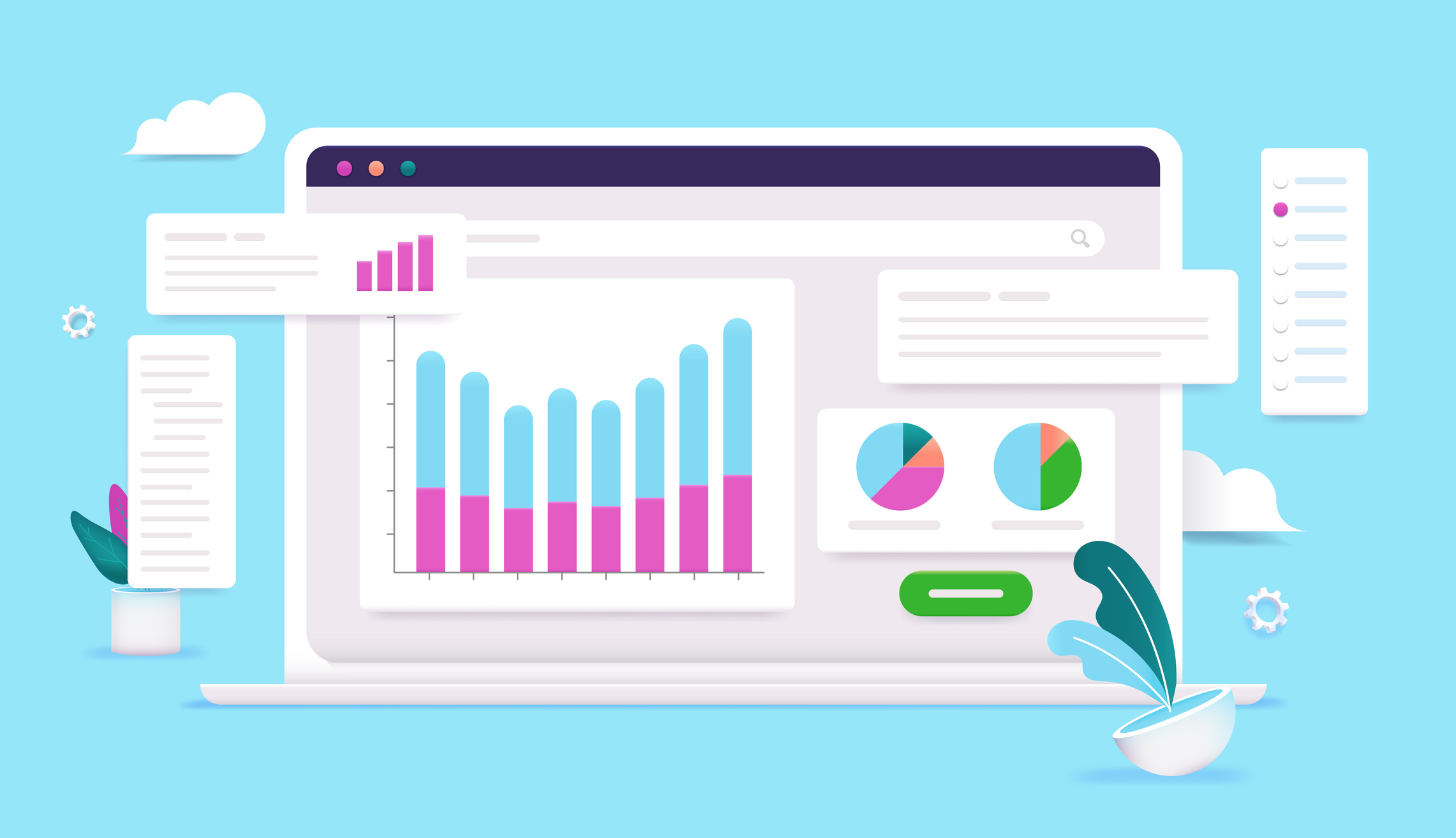
While speech analytics tools for call centers can vary, there are some core features you should look for when comparing your options.
AI-powered Transcription
Effective speech analytics tools should be able to transcribe every conversation accurately, and in real time. These transcripts should have a high degree of accuracy and easily be scaled up and down. Speech analytics tools should also be able to leverage artificial intelligence to analyze transcripts and detect patterns, surface intent and sentiment data, and highlight trends.
Dashboards and Real-time Analytics
Customizable dashboards with real-time insights into employee performance and customer satisfaction metrics are a key feature of speech analytics tools. These dashboards can help employees adapt rapidly to changing circumstances.
Sentiment Analysis
Sentiment analysis technology helps examine the tone and words a customer uses for insights into their emotional state. This can include positive, negative, or neutral sentiments. By analyzing words, phrases, and the overall context, the tool determines how customers feel about the service or product. By gauging sentiment, call centers can identify unhappy customers quickly and address their issues more effectively. Over time, sentiment analysis can provide trends and patterns in customer emotions, helping management make informed decisions.
Keyword and Phrase Monitoring
Speech analytics tools also work by scanning conversations for keywords and phrases. This allows you to track when customers mention a competitor or a product, whether agents adhere to specific scripts, and general patterns in customer queries.
Advanced Automation and Insights
Speech analytics software doesn’t just empower companies to automate the transcription and analysis of conversations. It can also automatically notify supervisors and managers when quality assurance or customer experience issues emerge, allowing for a rapid response. Speech analytics tools can also help in identifying trends and patterns in customer calls, such as common queries or prevalent issues with products or services. This insight can guide business decisions, helping to improve product offerings or customer service strategies.
Best Speech Analytics Tools for Call Centers
Speech analytics software is commonly marketed under the broader category of conversation analytics. There are many solutions to choose from today and most can be seamlessly integrated with various call center platforms.
Here’s a roundup of the top-rated speech analytics tools for call centers.
Tethr
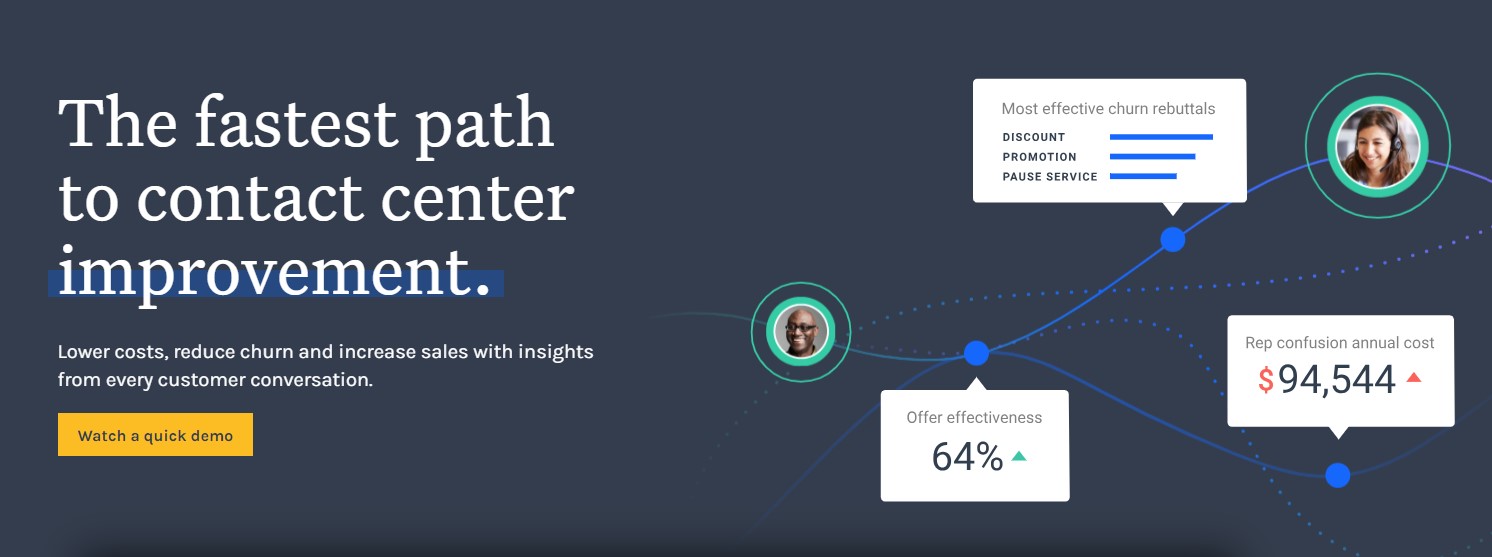 Tethr is a robust conversation intelligence platform that offers a range of features designed to analyze customer interactions and provide actionable insights.
Tethr is a robust conversation intelligence platform that offers a range of features designed to analyze customer interactions and provide actionable insights.
Key Features:
- Voice Analytics: Analyzes spoken content to derive customer sentiment and intent.
- Operational Metrics: Tracks performance metrics to help optimize call center operations.
- Data Visualization: Tethr offers comprehensive dashboards and visual representations of data, making it easier for users to understand trends, spot issues, and track improvements over time.
- Customizable AI Models: Users can tailor AI models to fit specific needs and scenarios, ensuring that the insights generated are relevant and actionable for their particular business context.
Pros: Tethr excels in extracting meaningful data from customer conversations, aiding in strategic decision-making.
Cons: The platform may require a significant learning curve to fully exploit its analytical capabilities.
Convin
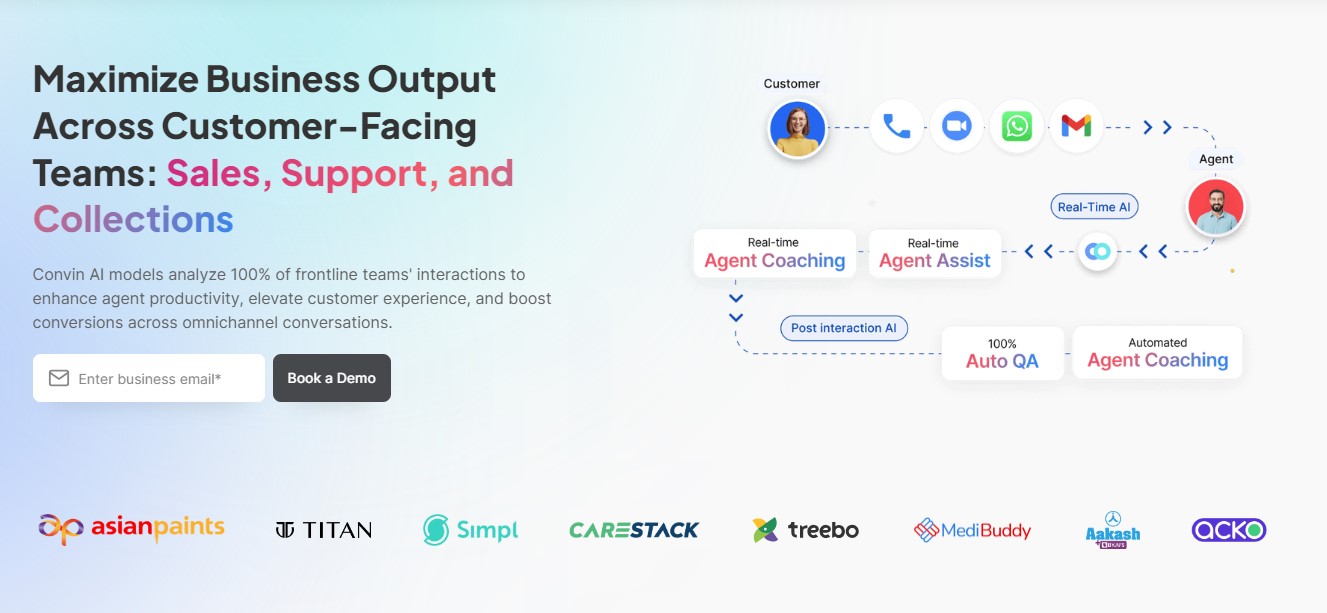 Convin is an AI-powered speech analytics tool that enhances the performance of contact centers through comprehensive conversation intelligence capabilities.
Convin is an AI-powered speech analytics tool that enhances the performance of contact centers through comprehensive conversation intelligence capabilities.
Key Features:
- Sentiment Analysis: Understand the emotional tone behind customer interactions.
- Predictive Analytics: Use AI to predict call outcomes, helping to tailor strategies.
- Integration: Easily integrates with existing CRM systems for streamlined workflows.
Pros: Convin uses advanced AI to transform conversations into actionable insights, which is great for improving engagement and decision-making processes.
Cons: As with many AI tools, the accuracy of insights can vary, and initial setup may require substantial customization.
Observe.AI
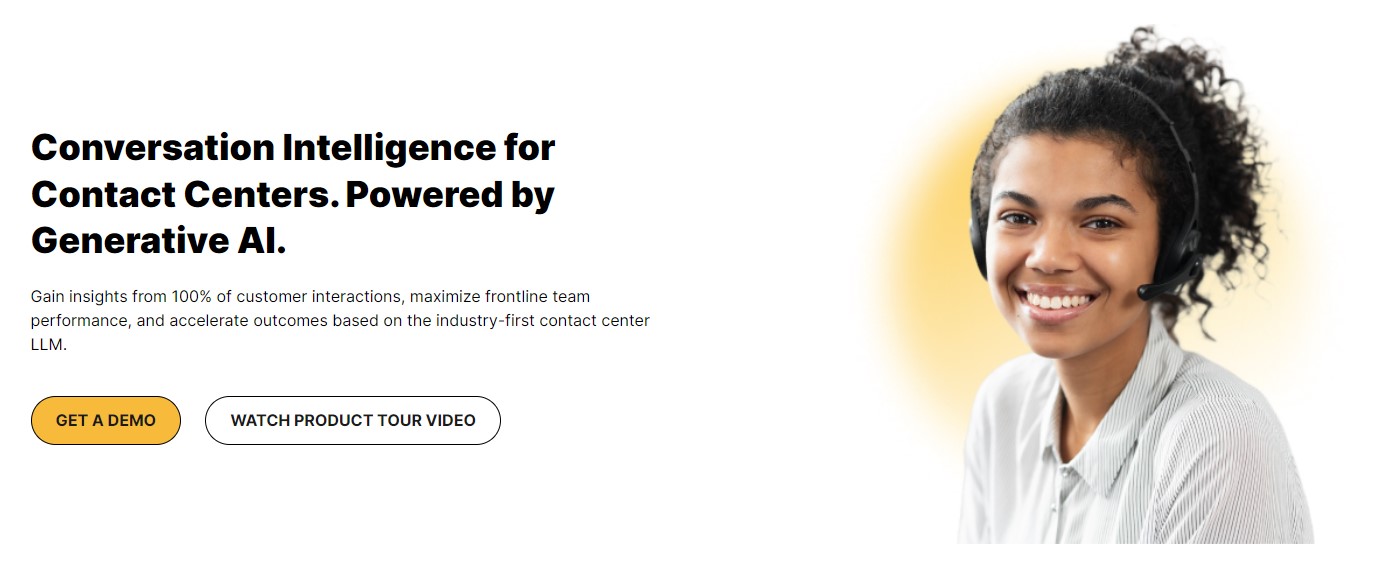 Observe.AI is a speech analytics platform designed to enhance the performance of contact centers through advanced analytics and AI-driven insights.
Observe.AI is a speech analytics platform designed to enhance the performance of contact centers through advanced analytics and AI-driven insights.
Key Features:
- Real-time Insights: Offers live analysis during calls to provide immediate feedback and coaching.
- Quality Assurance: Monitors compliance and service quality throughout customer interactions.
- Agent Coaching and Performance Tracking: Offers tools for targeted coaching and feedback, enabling personalized development plans for agents based on actual performance data.
- Intuitive Moments Builder: Allows users to create and highlight important moments in customer interactions, which can be used for training and improvement purposes.
Pros: Known for its intuitive interface and ease of setup, making it a favorite among users for quick deployment and usability.
Cons: Custom pricing may be a barrier for smaller call centers with limited budgets.
Gong

Gong is a popular conversation analytics tool used by sales teams to optimize their sales strategies based on data from customer interactions.
Key Features:
- Deal Intelligence: Identifies potential sales opportunities and risks.
- Market Intelligence: Keeps track of market trends to help align strategies.
- Real-time Assistance: Offers guidance during calls by providing real-time talking points and tactical advice to help sales reps handle various sales scenarios effectively.
- Conversation Capture: Automatically records and transcribes sales calls and meetings, making every interaction searchable and analyzable.
Pros: Excellent for teams focused on sales, as it provides detailed insights into customer behavior and sales effectiveness.
Cons: Primarily designed for sales environments, which may not be as useful for service-focused call centers.
Chorus by ZoomInfo
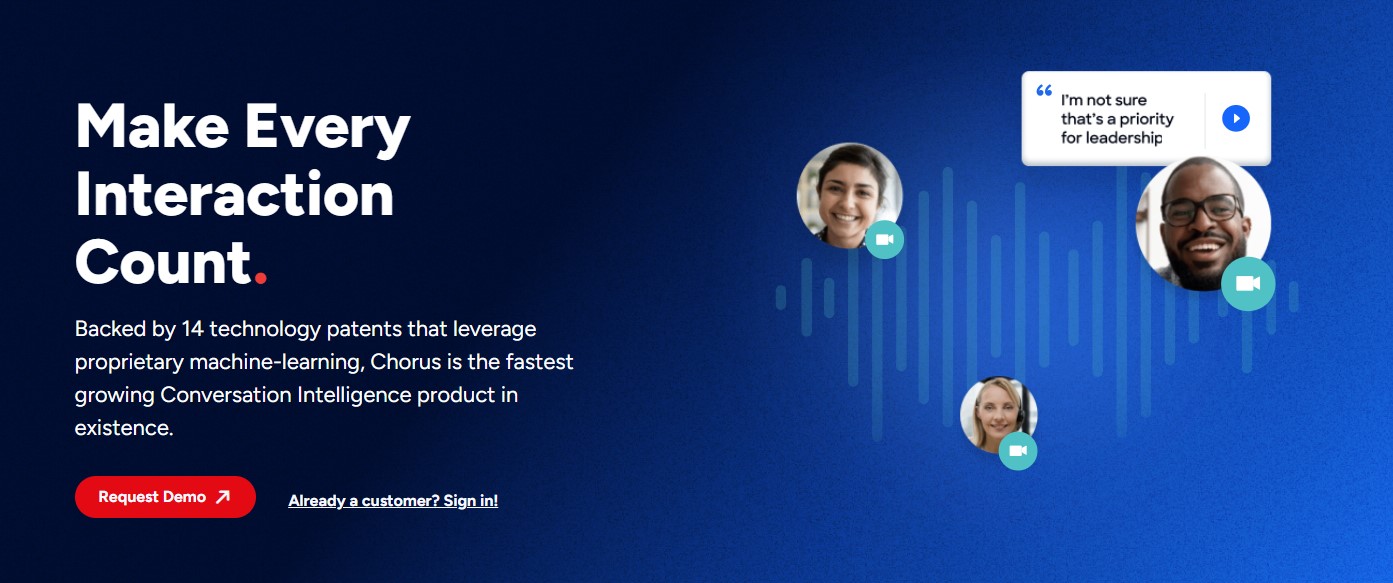
Another tool designed for sales teams, Chorus by ZoomInfo helps performance-driven sales teams capture and analyze all customer calls, meetings, and emails.
Key Features:
- Relationship Management: Tracks customer relationships to maintain engagement and satisfaction.
- Connected Intelligence: Integrates with other platforms for a comprehensive view of customer interactions.
- Advanced Transcription: The tool provides high-quality transcriptions of sales calls, which are searchable and can be analyzed for key themes, topics, and actionable insights.
Pros: Chorus is particularly adept at identifying key moments in conversations that can lead to successful outcomes.
Cons: Users have reported that it can be pricey and the feature set in the basic plan is limited.
Best Practices for Implementing Speech Analytics
Choosing a speech analytics tool and deploying it within your call center requires careful planning. Here are some best practices for implementing speech analytics in your call center.
Evaluate Vendors Carefully
When comparing different vendors of speech analytics software, there are a few things to consider:
- Transcription accuracy
- Scalability
- Ease of use
- Real-time reporting and analytics
- Integration capabilities
You should also research the reputation of each vendor by reading reviews and customer testimonials. Look for vendors with proven expertise and a solid track record in speech analytics. Experience in your industry can be particularly valuable as it means the vendor will be familiar with industry-specific challenges and regulations.
If you’re taking an omnichannel approach to customer service, choosing a vendor that offers solutions for both text and speech analytics is an important consideration. Choosing an omnichannel-enabled speech analytics tool can help enhance your return on investment (ROI) and give you better visibility into the customer journey.
Prioritize Integration with Existing Systems
The best speech analytics tools should work seamlessly with your call center’s existing technology. Some contact center providers, like ComputerTalk, offer out-of-the-box integrations with speech analytics tools, which eliminates the need to invest in customized integrations.
Alongside a robust integration with your contact center, integrations with CRM tools and workforce management software can help maximize the value of your speech analytics deployment.
Focus on Employee Training
The best speech analytics tools should be intuitive and easy to use. However, employees may still need training to ensure they can access the full benefits of the new technology. Invest in training and onboarding programs to familiarize agents and supervisors with your new tool.
Remember, some vendors will also offer access to training resources to help with the onboarding experience.
Consider Compliance and Privacy Issues
When recording, transcribing, and analyzing conversations, ensuring compliance with local laws and regulations is critical. The data captured by speech analytics tools can be sensitive and may be subject to a range of regulatory requirements. Understanding which guidelines you need to adhere to and how you can safeguard your data is very important.
Make sure you have strong access controls in place to limit access to sensitive data. If you don’t have one already, you should also implement a data governance strategy to reduce compliance risks. Depending on your data security strategy, it may also be important to consider how and where recorded and transcribed data is stored.
Constantly Monitor and Optimize
Once implemented, you should carefully monitor the performance of your new speech analytics tool. Pay attention to transcription accuracy and the impact your reports are having on your customer experience goals. Track customer engagement and satisfaction metrics alongside agent performance and gather feedback from users to identify areas for improvement.
Making consistent adjustments is important for optimizing the value of your speech analytics tool. Experiment with different methods, such as creating custom dashboards, refining speech recognition models, and updating training materials.
Unlocking the Benefits of Speech Analytics for Call Centers
Speech analytics tools allow call centers to surface valuable trends and insights from every customer conversation. These tools can revolutionize the performance of your call center by offering real-time feedback on customer interactions while helping business leaders craft more effective training programs.
Speech analytics tools can also improve the customer experience by reducing call handling times, enabling more personalized conversations, and providing insights into friction points.
With the right tools, call centers can become more agile and data driven. Discover how you can unlock the benefits of speech analytics in your call center by contacting a ComputerTalk representative today.
More from our blog
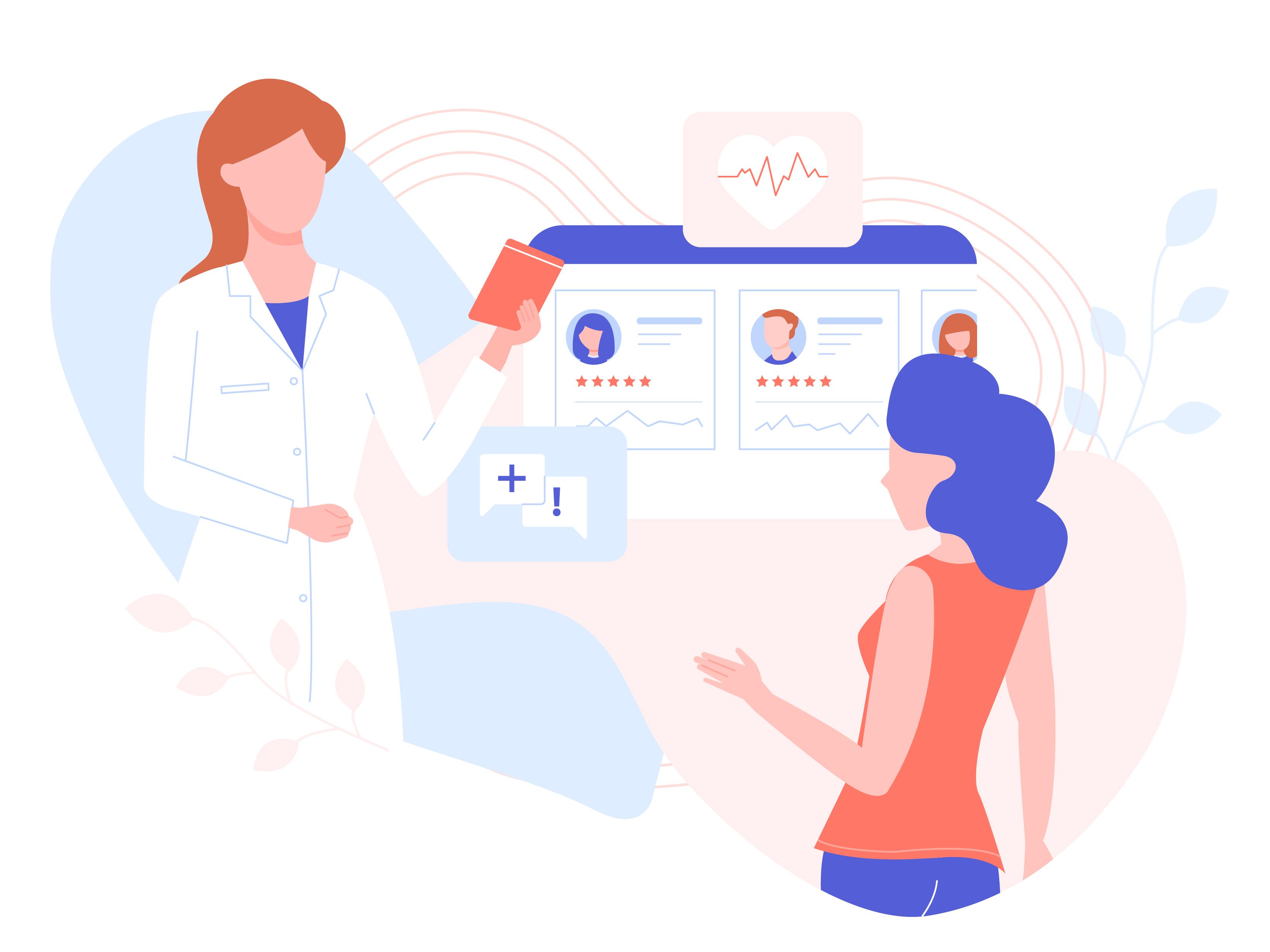 Due to busy schedules, it’s common for patients to forget about upcoming appointments. Unfortunately for healthcare organizations, this can lead to several negative consequences.
Due to busy schedules, it’s common for patients to forget about upcoming appointments. Unfortunately for healthcare organizations, this can lead to several negative consequences.
 Cybersecurity is increasingly important in today’s digital age. Learn how to protect your customer data from cyberattacks.
Cybersecurity is increasingly important in today’s digital age. Learn how to protect your customer data from cyberattacks.
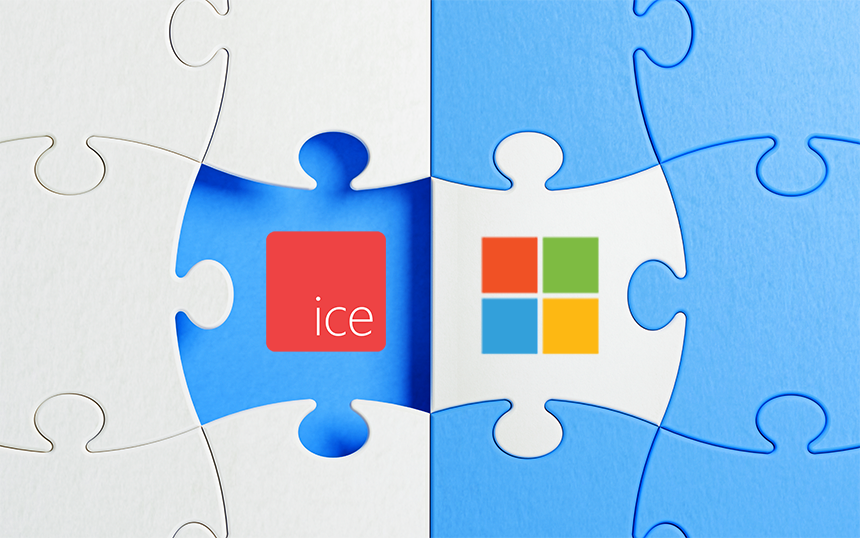 Discover how ComputerTalk’s ice Contact Center evolved alongside Microsoft—from LCS and OCS to Lync, Skype for Business, and Microsoft Teams.
Discover how ComputerTalk’s ice Contact Center evolved alongside Microsoft—from LCS and OCS to Lync, Skype for Business, and Microsoft Teams.

